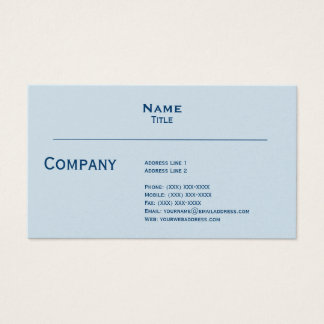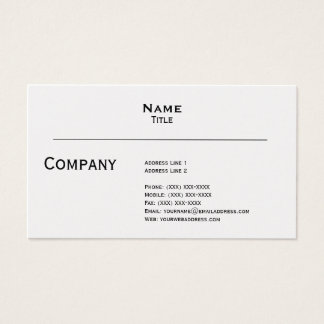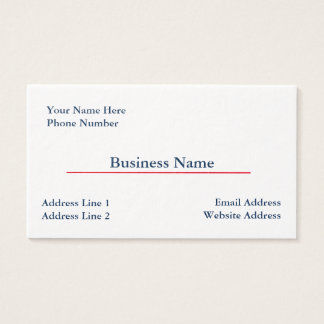It would be fantastic to have an unlimited marketing budget, but that simply doesn’t happen in real life.
Small businesses can’t spend millions of dollars on marketing.
The average larger company spends around 9-12% of its revenue on marketing.
The average small business can spend as little as 2% on marketing.
According to a survey from Statista, nearly half of all small businesses in the U.S. spent at least $4,000 on marketing a year ago.
This makes marketing for small businesses and startups tricky, and budgeting stressful.
So how can you do more, with less? How much of your budget should you spend on marketing? How much should you spend on social media marketing?
There’s no magic number because every company is different.
Yet, many successful small businesses and startups do well with limited marketing budgets.
Here are 6 ways you can stretch your company’s marketing budget to grow revenue and profits.
1. Establish and understand your business goals.
Before assessing different marketing strategies, make sure you understand your goals.
It’s easy to waste your marketing dollars if you don’t understand your goals or have not bothered to set goals.
Too many business owners forget this, as we recently wrote:
It’s not unusual for small business owners and entrepreneurs to focus on strategies and tactics at the expense of also setting appropriate goals. Often, this happens when you see someone else successfully executing a strategy or tactic – and you try to duplicate their success by doing the same thing.
For example, if you’re looking to promote a premium pricing tier and your prospects are mostly on Facebook, then you’re wasting time and money if you’re running Twitter ads.
Once you set your goals, it’s important to understand how data can inform your strategies.
The smartest businesses are data-informed or data-driven businesses. But if you don’t set goals, data is just noise.
If you have lots of data but don’t know what to do with it, the data is useless and you’ll just be wasting your marketing dollars.
No business has a budget for wasted money.
Fortunately, you can take the guesswork out of this process. We’ve previously discussed how you can use science to improve your marketing. Here’s an example from that article:
To optimize how you use data to help you make decisions, you must ask the right questions and focus on the relevant data. For example, if you’re wondering why or when your customers are leaving your site, consider what data you have that can help you answer those questions. You can look at customer complaints, payment history, the funnel customers follow when browsing your site, poor customer service experience, frequency of usage, etc.
Analyzing social media engagement, looking at the data in Google Analytics, and reviewing customer survey results can help you to understand where you can focus your efforts and where to deploy your marketing dollars.
You should build your marketing plan only after you’ve set goals.
2. Make social media a strategic part of your marketing efforts.
With a goal-based marketing plan, it’s easier to think carefully about maximizing a small marketing budget.
Today, it’s tough to market without investing some time and money into social media marketing channels.
As we wrote previously:
A 2017 study by Social Media Examiner reveals that 92% of marketers surveyed feel that social media is important to their business. 88% of those marketers said that social media has increased exposure and 78% of marketers listed increased traffic for their business (among other benefits like generating leads and increased sales).
But, like any other channel, social media is only as useful as the strategy behind it. For many business owners and marketers, figuring out what content to post on social media is a bit of a puzzle. We’ve heard many business owners and marketers ask “How do I use social media for my business?” or “How do I start social media marketing?”
Social media is fast, data-driven, and flexible. It’s instantaneous, provides large amounts of data, and is useful for most businesses to generate leads, build thought-leadership, or develop referral networks.
For more advice on social media marketing, including best practices, check out 7 Ways Your Small Business Can Market Better on Social Media.
3. Leverage free or inexpensive content marketing to stretch your budget.
Content marketing is another great way to stretch your small business marketing budget.
People love to consume content, but they hate seeing ads. That’s why content marketing has become so popular in the last few years. In fact, companies have even been turning to influencers for help on creating content.
Content marketing, like other forms of marketing, is about storytelling.
The good news is that content marketing is inexpensive. There are tons of free or low-cost content marketing tools that can help you stretch your budget.
And unless you pay for promoted posts, posting on sites like Facebook and Twitter is completely free.
While content marketing does take time, focusing on quality is a great way to keep costs and time to a minimum. As we previously wrote:
The majority of your content should not be promotional. Instead, ask yourself what your audience wants or needs to know. Then tailor your content to their interests or help them solve everyday problems.
Also, take the time to share updates about your company’s triumphs and exciting new ventures (assuming they’re genuine, of course). Share your brand’s journey to help build trust.
And, when you do write (less frequent) promotional content, speak from a position of truth and honesty. Show your audience how the product will benefit their everyday life without the slick hyperbole. Your product or service’s quality should be able to stand on its own.
Content doesn’t just mean writing. Videos and design are great ways to create quality content too.
In fact, everything about your brand is a form of content marketing.
A strong brand starts with a great business name and a memorable logo, but a brand is more than a name and logo. As we recently wrote in Powerful Branding Lessons From The World’s Best Brands (That Actually Work for Your Small Business):
A brand is the sum total of the experience your customers and customer prospects have with your company.
A strong brand communicates what your company does, how it does it, and at the same time, establishes trust and credibility with your prospects and customers.
Your company’s brand is, in many ways, its personality.
Your brand lives in everyday interactions your company has with its prospects and customers, including the images you share, the messages you post on your website, the content of your marketing materials, your presentations and booths at conferences, and your posts on social networks.
4. Creatively use public relations (PR) to build recognition.
Another way to make the most of your small marketing budget is to focus on public relations (PR).
This means finding ways to get the media to write about your business. As we previously wrote:
Don’t be afraid to pitch reporters — the stories that people like you bring to them are the lifeblood of any media outlet. Writers and editors are always looking for great story ideas and as long as your pitch is timely and on topic, they will listen. And just because they don’t bite on your current pitch, don’t give up – you should focus on developing the relationship by asking questions, giving and getting real-time feedback, and developing a one-on-one relationship which allows you to share useful information and give that writer the benefit of your own perspective and personality.
You don’t need a PR agency to do this for you. Build relationships and become your own PR manager:
PR professionals will tell you, correctly, that this is an industry built on relationships and build those, you must. Media professionals, journalists, bloggers and others will typically turn to people they know and sources they consider reliable when looking for opinions, quotes, or expert analysis. There is a symbiotic relationship that exists between these professionals and they are uniquely dependent on one another. PR professionals cannot be successful without placements and media professionals are reliant on the PR folk for leads, story ideas, and background material. Entrepreneurs can and should develop ongoing relationships with writers and others who can help their companies and whom they can also help when called upon.
Nor do you need a PR agency if you have a crisis. For more on this, read Reliable Strategies To Help Your Business Handle a PR Crisis.
5. Collaborate with others to reach bigger audiences.
Collaboration is a great way to maximize a small business marketing budget.
Partnerships can be really helpful to small businesses looking for a bigger audience.
This is a lesson smaller companies can learn from bigger Brands. As we wrote previously:
Global companies regularly collaborate to enhance their marketing message and enrich consumer experience. Smart brands recognize that their brand is more than just a company’s products and services – it’s also the ecosystem that surrounds those products and services. Such collaborative efforts are strategic – designed to combine creativity and expertise, and to broaden the appeal of both brands to more consumers around the world. In fact, even collaboration with environmental or charitable causes provides great value (but no direct financial value). See, for example, Levi’s collaboration with Water.org to highlight water conservation efforts.
6. Streamline your marketing tools and subscriptions.
Marketing tools are like cookies. Having a few is okay but having too many can cause a lot of problems.
It’s also very expensive!
It can be easy to fall into a pattern of subscribing to service after service that promises you better analytics, more streamlined content, and more customers.
But how many tools do you really need?
Depending on your company’s marketing plan, business goals, and marketing strategy, the tools you’ll need will vary.
For example, a company that uses social media moderately probably doesn’t need to subscribe to the highest tier of a social media management platform and pay hundreds of dollars per month. A $10 per month account on Buffer might be sufficient.
Maximizing your budget means carefully spending money in places where it makes the most sense.
If a tool you’re paying for isn’t helping you to make decisions or maximize your time, it might be time to cut ties.
We’ve previously written about many awesome tools and recommend you take a look to find tools that can help you with visual marketing and content marketing, as well as tools/apps that can help you run your business.
Let’s Wrap Up
If your marketing budget is still entirely consumed by advertising in the Yellow Pages, you’re probably wasting money.
At the end of the day, no matter your strategy, you want to break through the noise at a lower cost and stretch your marketing budget as far as it will go.
15% Off All Business Cards
VIEW ALL
$23.25
$60.05
$60.05

$44.25
$44.25
$58.55
$68.95
$65.40
$60.05







No comments:
Post a Comment